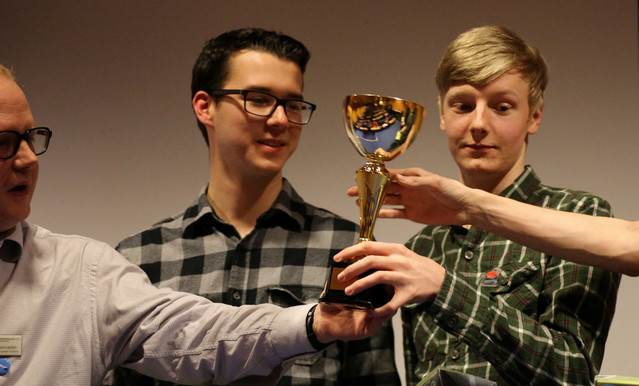With the world of data that surrounds us (both big data and smaller data), there’s a lot of information available to help students and entrepreneurs make smart decisions.
I’ve posted on the blog before about the students that I’m working with to add gamification ideas to programming learning. This all forms part of the JISC Supporting Technology Startup Projects contest. Here, I’ve analysed what made a winning entry in that contest in 2015.
I thought it would be interesting to compare how closely our competition entry for eduLevel matches the winning trends suggested by the data from 2015 (and yes, in future years, it may be useful to do this before putting the entry forward).
How Well Does eduLevel Match The 2015 Trends?
Strengths Of The Entry
- Word count of the marketing copy – This runs to 676 words, which is on the longer side. However, two of the winning four entries from 2015 were also long (at 672 and 514 words respectively) and generally the longer entries do well. The instructions about what to include also included more components in 2016 than in 2015.
- Large and identified team. The team consists of five people (four students plus me) and larger teams were clearly favoured in 2015. One winning team had four members and another team had five members. I believe that the staff and student partnership here is also a strength.
- Employability aspects to the project. Programming is a key area for jobs and this work is supporting students towards employment.
- Mobile aspect to the project. The eduLevel software is being developed to run on a desktop or a mobile device This can be accessed however is preferred by individual learners.
- Key words used. Students, their skills and associated universities are all key to this work. These are words that featured frequently in the winning entries.
Possible Negatives of the Entry
- Video length. The video pitch is only 2 minutes 37 seconds, shorter than the videos for any of the winning entries in 2015. The belief putting the video together is that people would prefer to watch shorter videos, but that may have been misguided.
- Discussion of collaboration. The potential for eduLevel to encourage collaboration, as students try and set challenges and gain awards, was mentioned several times in the video and copy. But, out of three projects that focused on collaboration in 2015, none were funded. Thankfully here, collaboration is a benefit, but not the main purpose.
Overall though, the strengths look to outweigh the possible negatives and it’s hoped that the industrial support behind eduLevel will also be looked at as a strength.
The Future Of eduLevel
It is certainly true that eduLevel will move forward in some form regardless of the result of the competition.
 It will be instructive to see how closely the results in 2016 match the patterns that were established in 2015. The field is bigger and more competitive, with 22 entries and the expectaton that five of these will be funded.
It will be instructive to see how closely the results in 2016 match the patterns that were established in 2015. The field is bigger and more competitive, with 22 entries and the expectaton that five of these will be funded.
You can find out more about the plans for eduLevel and adding gamification to programing learning here.
